Check out our digital marketing top tips for 2022
You should consider these for your business's digital marketing strategy throughout 2022.
We cover expert tips for eCommerce, Amazon Advertising, Google Ads, Social Media, SEO, and Local Business.
You can read more information on these topics, below...
Want to drive sales? Just add people.
Tips for eCommerce
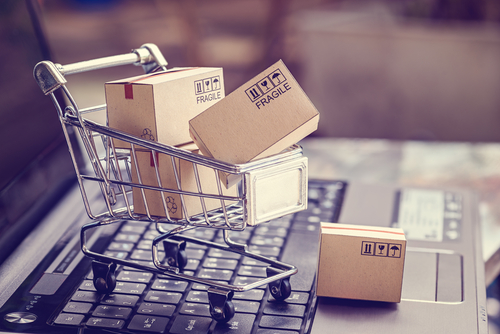
The important thing to remember with any sales periods that you’re trying to run, e.g. Black Friday, January Sales, Summer Sales, etc. is you need to understand what goals you are trying to achieve.
It’s very naive to think ‘we’re going to run a sale to make the most profit in that given period’.
Instead, you could think about these sales periods in a more dynamic way:
How can you increase customer acquisition?
How can we get new customers to the website?
Can you sacrifice some margin to increase the volume of sales and grow revenue instead of purely a profit focus?
This way you could reap the longer-term benefits of running these promotions.
– Longer-term profitability
– Build up your email marketing list to remarket to.
– Getting your brand out in front of new customers that become repeat purchasers.

Research suggests that a potential customer needs to see a business’s advertising around 7 times before making their first purchase.
(This decreases as you get more repeat customers who feel more loyal to you and trust your service.)
Remarketing your website to potential new customers through different channels (before they’ve made that first purchase) is really important.
You can do remarketing through the Google Display Network (Youtube, Gmail, etc.) which can be integrated through a Smart Shopping campaign.
You can also run remarketing campaigns on social media, for example, Facebook ads, this is really useful for exploring audiences and targeting specific segments.

It’s really important to consider offering multiple payment methods at checkout because you want to ensure that the customer journey is as smooth as possible and reduce cart abandonment.
You don’t want customers getting to the end of the checkout process – when they’ve already filled out their basket and given you their information – just to find out that there’s not a payment provider available that they want to work with.
So, it’s really important to make sure you have multiple options like PayPal, etc.
Also, something that is becoming more of the norm, is the ability to flex payments and spread the cost over a longer period of time. So, methods such as Klarna, for example.
If you’re doing this before we get into 2023, 2024 – when this is going to be standard practice – then you’re going to be ahead of the game and stop customers abandoning their shopping baskets.
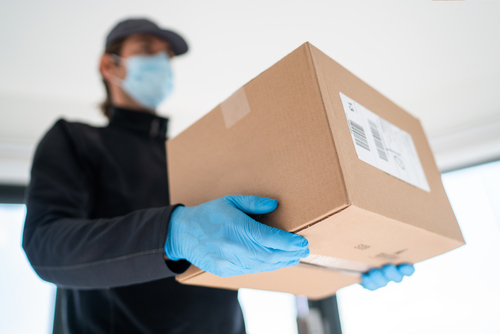
Research shows that 65% of people are unwilling to pay for delivery.
You need to really think about your customer’s decision making process as they move through the purchase journey on your website.
It’s all about considering potential barriers that are stopping potential customers from converting.
For example, if you’re selling a £45 product, and then charging £5 for delivery, a customer is going to feel like they’re only getting a product worth £45, for £50 total cost.
However, if you sell that exact same product for £50 plus free delivery, the customer is likely to feel like they’re getting a product worth £50 but with free delivery as an added perk.
If you have tight margins, you could integrate the delivery costs into the price, or you could offer free delivery for orders over £30, £50, etc. which can help to increase your order values as well.
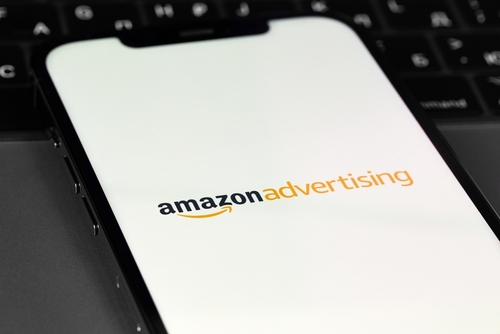
Amazon has over 220 million worldwide active users, every month.
If you sell products online and don’t have an Amazon account, then you’re missing out on potential traffic that could be driven towards your products.
This could be a fantastic additional channel to support your wider marketing strategy.

One of the more recent ad types on Amazon is Sponsored Brands videos.
From what we’ve seen so far from this ad set, is really high engagement rates and really high conversion rates, at a relatively low cost per click.
Our top tip is to utilise this ad type if you have the video assets available.
Tips for Google Ads
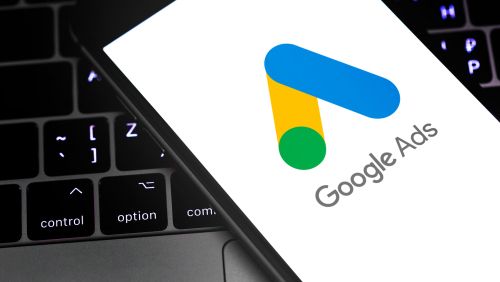
One thing that’s really important when it comes to Google Ads, is to empathise with your potential customers.
You need to think about what it is they’re looking for when searching for a product or service.
When you’re creating the headlines and copy of your ads, you need to make sure that the wording used is going to be relevant to the searcher.
Your ad needs to be solving whatever pain point the searcher has and your product or service should be the answer to their problem.
If you run irrelevant ads that don’t match what the searcher is really looking for, then you’re targeting the wrong audience, which will result in wasted budget on irrelevant clicks and higher bounce rates.

Conversion Tracking is one of the most important things when it comes to running Google Ads.
It’s quite often when clients first come on board with our services, that when they’ve been running their own ad campaigns, they’ve not had this conversion tracking set up.
You could have lots of traffic coming through your ads, but without Conversion Tracking, there’s no way of knowing if these users converted (filled out a form, made a purchase, etc.).
When you set this up correctly, you can see exactly how many leads or customers you have acquired from your ads.
There isn’t much point in spending ad budget on impressions and clicks if you can’t properly measure the return you are getting from this.

Another important factor to consider when running a Google Ads campaign is Quality Score.
Improving your Quality Score can improve your Ad Rank (the position your ad appears on search).
Google measures your Quality Score by how many people click on your ad (known as Click-Through-Rate).
This can be determined by three factors:
1. How relevant are your keywords?
2. Does your ad copy and CTA (Call To Action) match what the user is searching for?
3. Landing page experience – what’s it like for the user when they click the ad and arrive at your site.
These are all really important contributors to improving your Quality Score and achieving cheaper cost-per-clicks.
Tips for Social Media

Consistency is key.
No matter what social media platform you are using, you need to make sure that you are posting regular and consistent content.
Regular posting will help visitors and potential customers to see that you are an active business.
Not only this, organic posting on social media shows visitors that you engage with your audience and that you’re up-to-date and keeping up with the latest trends – making your brand more relatable.
Be consistent on the days and times you post and your audience will come to expect and look forward to seeing your content at these times.
Be mindful not to over-post. If you post too much content, you could overwhelm your audience with too much information, which can come across as spammy – resulting in them becoming disengaged.

A quick best practice when it comes to creating Facebook Ads…
Keep your text short.
People on Facebook, Instagram, Twitter, etc. scan very quickly -research has shown that it takes 0.4 seconds for people to recognise adverts when scrolling.
Make sure to keep your text short, clear and concise in order to get your message across almost instantaneously.

Some TikTok content ‘quick wins’…
– If you sell products, why not do an unboxing video? This will spark interest in your products in an engaging way.
– ‘How-To’ videos – show your audience how to use your products or how to set them up. This builds trust and strengthens your relationship with your audience.
– ‘Meet The Team’ or an office/business tour – you could show how the product is made and how it gets to them.
This type of content is really engaging and helps to show a human side to your business – you’re not just a faceless brand.
For customers that are in the discovery phase of finding your company, then this content will be a great way to capture their attention and keep them engaged with your brand.
Pro Tip: Be sure to use research trending songs and audio tracks in order to maximise reach.

Share your customer testimonials/reviews on your social media channels.
You probably already have reviews where people are saying amazing things about your business. You can take these reviews and create ‘user-generated content’ – share them as posts, stories, graphics or videos.
If new customers visit your social pages and see these reviews, it instantly reflects positively on your brand, because they can see that other customers have had a positive experience with you.
The best thing about user-generated content is that it’s already there – all you need to do is share it!
Tips for SEO

40% of all consumers will abandon a website if it takes 3 or more seconds to load.
If your website is slow, there are things you can do to combat this and reduce the time it takes for your website to load.
For example, things like optimising your images, reducing their file size and also optimising the code of your website, all contribute to the time it takes for your site to load.
If you can do this, it is likely to lead to fewer visitors bouncing away from your website, improving the overall user experience (UX) of your site, leading to more conversions and more revenue!

A big factor to consider when optimising your website for the customer journey is, how easy is it to navigate your website?
Is it simple to use the navigation menu?
If you’re selling products online, are they categorised effectively? Is it easy to follow for the user?
It’s all about matching the search intent of your website users – reducing the amount of sticking points there are for users to make the desired action (make a purchase, call, download, etc.).
If your navigation is difficult to follow and not easy to use, then it is likely that potential customers will become dissatisfied and leave your website – potentially never returning.
It is vital to ensure the user experience on your site is optimised.

It’s important to have trust signals on your website that appear ‘above the fold’ (the part of the screen that users instantly see when they land on a page before they start scrolling).
Some trust signals include:
– Rated ‘Excellent’ on Trustpilot, Google, etc.
– Unique Selling Points
– Offer free delivery
– Recognised partners
– Established for a long time.
– Awards/Certifications
– How many clients you’ve helped/worked with.
These will all help to instantly build trust with your website visitors. Particularly for new customers who have never seen your brand before, this is really important.

Throughout 2021, 56% of global internet traffic comes from mobile devices (expected to increase in 2022).
So, if your website isn’t optimised for mobile users, you’re at an instant disadvantage.
A quick way to check this is to open your website on a mobile device…
– Are any images being cut off the screen or displayed incorrectly?
– Does the user have to scroll through long lines of text?
– Is the homepage displayed correctly?
– Is the navigation menu easy to use on mobile?
These could all be reasons why potential customers are leaving your site and not returning – missing out on potential revenue.
Optimising your website for mobile users will help to combat this.
Tips for Local Businesses

If you’re a service-based business, you should consider Google’s Local Services Ads (LSA).
LSA’s are a cost-effective way to advertise your business, as you only pay per lead – unlike regular Google ads, where you pay per click.
These ads appear at the top of page one on the Google Search results page (SERP), giving your business greater visibility.
If someone searches for a local service ‘near me’ these ads will be the first thing they see.
Another benefit to using these ads is that you can get certified with the Google Guarantee, which is displayed on your ads – reassuring potential customers that you are a credible business.
These ads are only available to certain service-based businesses, so be sure to check if your business is eligible.
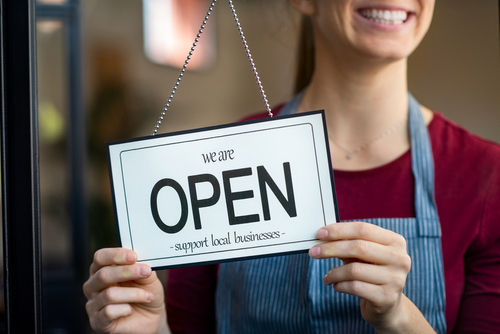
97% of people search online to find a local business.
With 92% of those users choosing a business from the first page of those local search results.
When people are searching for the products/services you offer in your local area, it is so important that your business is ranking in these searches.
If not, your competitors could be stealing potential customers away from your business.
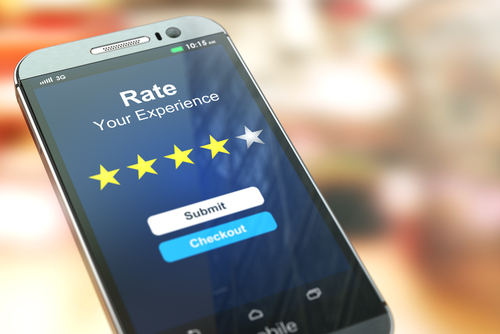
90% of customers check online reviews before visiting a business.
You need to be asking your customers regularly for reviews.
Not only are they a crucial trust factor, affecting customer decision making, but Google also rewards businesses that receive frequent, positive reviews with higher rankings.
Pro Tip: Reply to your customers’ reviews in a timely manner (even negative ones). This shows them that you engage with them and care about their feedback. Google takes this into consideration when determining rankings.

A great way to improve your website’s relevance on search engines is to make sure that every page has great, specific, localised content.
You can use tools like Keyword Planner to find out what keywords people are using to search within your local area, and use these keywords throughout your site.
This will give your website much more authority in the eyes of Google when people search for products or services in your local area.
Google aims to give searchers the most relevant results possible, so, if your website is filled with local, authoritative and relevant content, you’re likely to be rewarded with better rankings on the search results page.
